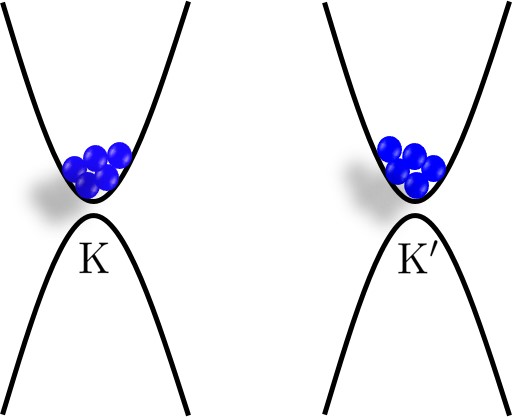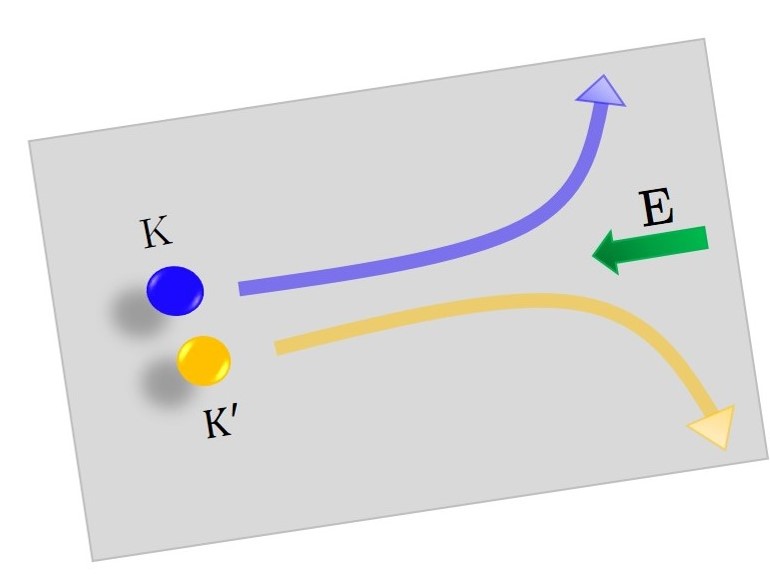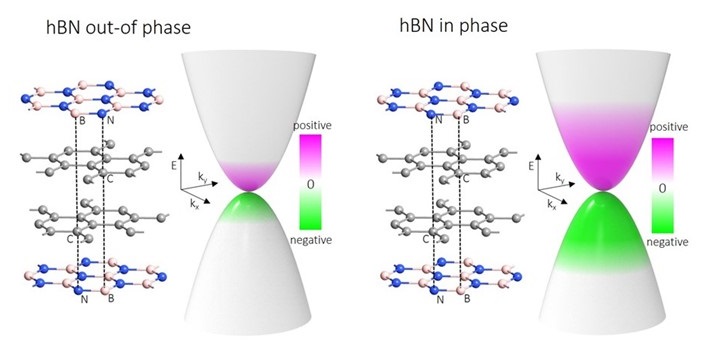- HOME
- Two-dimensional material valleytronics research
Two-dimensional material valleytronics research
Valleytronics
Degrees of freedom are used to distinguish charge carriers from one another. Charge and spin degrees of freedom are widely studied for storage and information processing technology. Electronics that use the charge degree of freedom are the backbone of current data processing technology. However, the physical motion of charges in electronics produces heat makes scientists look for a better alternative. While spintronics looks promising, it has stability issues. Another alternative is the valley degree of freedom, which distinguishes electrons with different momentums in the valley-shaped bands of materials. The study of valley degree of freedom is called valleytronics.

Schematic diagram showing carriers at K and K' valleys
The physical property that distinguishes the electrons in different valleys is Berry curvature. Berry curvature can be understood as a pseudo-magnetic field in the reciprocal space. However, for a material to have a non-zero Berry curvature, either the system's time-reversal symmetry or spatial inversion symmetry should be broken. Once either of these symmetries is broken, the carriers in different valleys experience Berry curvature of opposite polarity, leading to a phenomenon called the valley Hall effect, where the carriers from different valleys move in the opposite directions.

Schematic representation of the valley Hall effect, where the carriers at K and K' valleys move to opposite sides under the presence of an in-plane electric field
This laboratory conducts theoretical and experimental studies to understand valleytronics in two-dimensional materials such as graphene and transition metal dichalcogenides such as MoS2. Theoretical calculations are performed to study the emergence of Berry curvature when the inversion symmetry of the system is broken. At the same time, experimental studies are conducted to observe the Berry curvature-induced valley Hall effect in these systems. Currently, we are studying the layer-dependent valley Hall effect multi-layer MoS2.

Schematic diagram showing the effect of orientation of hBN encapsulation layers on the Berry curvature in bilayer graphene

 School of Materials Science, Japan Advanced Institute of Science and Technology
School of Materials Science, Japan Advanced Institute of Science and Technology